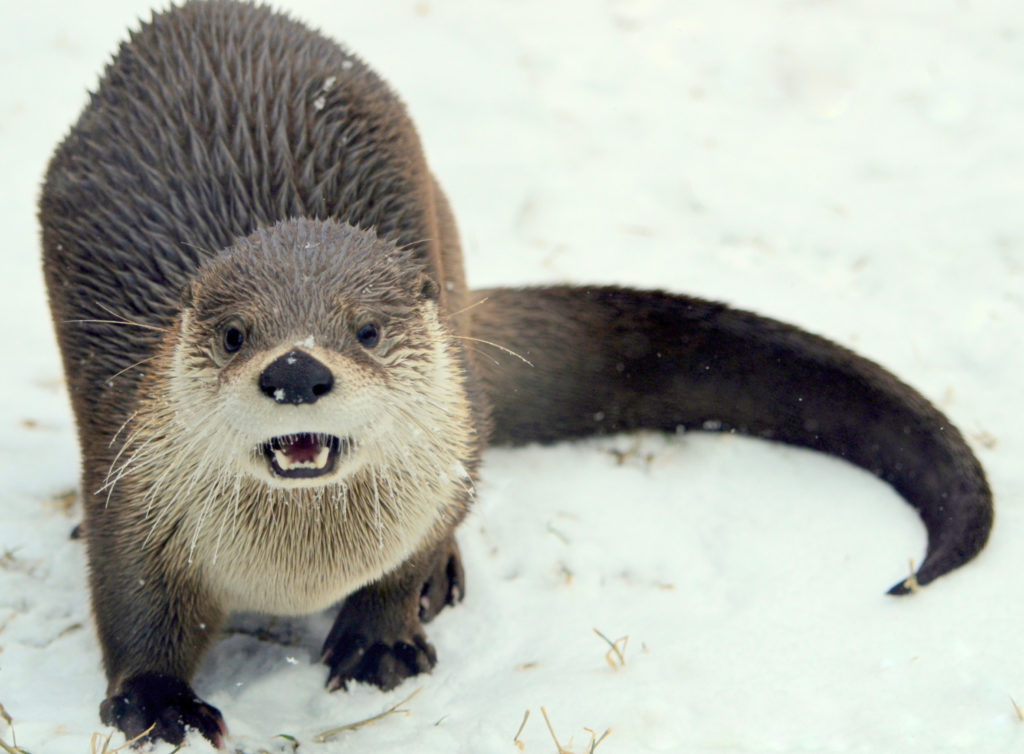Ahead of winter’s arrival on the mountain, Grandfather’s animal caretakers are busy planning and preparing for the season.
For the park’s black bears, it marks the time of year when they enter into a quasi-hibernation.
While black bears, like most other bears, are not true hibernators, they do consume significantly more calories with the approach of cold weather, slowly stop eating and then find a den in a protected location for their winter slumber.
Since those who reside at Grandfather Mountain are fed by their keepers, habitat staff simulates winter feeding patterns to enable the bears’ innate instinct to go into a state of “torpor,” or light sleep.
Christie Tipton, animal habitats curator for the Grandfather Mountain Stewardship Foundation, the nonprofit organization that owns and operates the Linville, N.C., nature park, explained that the process begins all the way back in late summer and early fall, when the bears’ diets are increased so they can accumulate fat supply in preparation for the months ahead.
“At the end of summer and beginning of fall, we start increasing their fat supply for the winter,” she said. “We watch their weight very carefully. Then, as we get closer to winter, we begin to decrease their food in order to mimic what happens in the wild. For example, they’ll get a massive amount of acorns and all this stuff for them to eat, and they gorge on it. Then, as winter comes, the food supply dwindles.”
They’ll then enter their dens to sleep the winter days away. However, during bouts of warmer weather, it’s not unusual to see them sleepily wandering around their habitat, searching for morsels of food.
“With all the other animals, we take care of them just like we do during spring, summer and fall,” Tipton said. “The otters are actually a little more active during the wintertime, because they like colder temperatures.”

The river otters are especially fond of snow. When there’s enough accumulation, they’re known to frolic, slide around on their bellies, burrow and even make tunnels, which guests can watch develop from behind a glass enclosure.
“Each species we have up here is native to Grandfather Mountain,” Tipton said, including the resident bald eagles and elk. “They all have physical characteristics and traits that allow them to thrive in environments like this.”
Throughout the winter, the staff also has to make sure ice doesn’t form over top of the ponds inside the animal habitats and that the lines which supply heat to the ponds remain functional. In 2023, a portion of a grant from the High Country Charitable Foundation went toward the purchase and installation of two Nelson watering systems in the elks’ shifting paddock. The stainless-steel watering bowls have insulated waterlines that are buried underground and a 250-watt heater to protect the system from freezing during cold weather.
Even in the harshest of conditions, Tipton said the animals are always cared for. In the event of possible travel delays, they’ll also receive additional food and water.
“When we have a lot of snow, it can be difficult for us to get up here, and there have been times when we’ve had to hike up the mountain to the habitats,” she said.
In other words, sometimes, you just have to grin and bear it.
Winter on Grandfather Mountain
Although the animals are a wintertime highlight, Grandfather Mountain features a mile-high slate of activities to be found in the “quieter season,” like crossing the Mile High Swinging Bridge for unrivaled, crystal-clear views, premier alpine hiking, picnicking on warmer days and even shopping.
To learn more about why winter is a prime time to visit Grandfather Mountain and to reserve tickets in advance, visit www.grandfather.com/winter-visits.
The nonprofit Grandfather Mountain Stewardship Foundation strives to inspire conservation of the natural world through education, exploration and example. For more information, visit www.grandfather.com.

